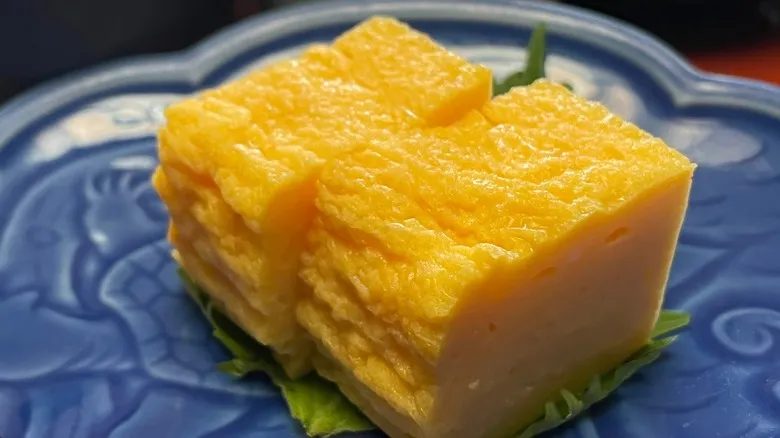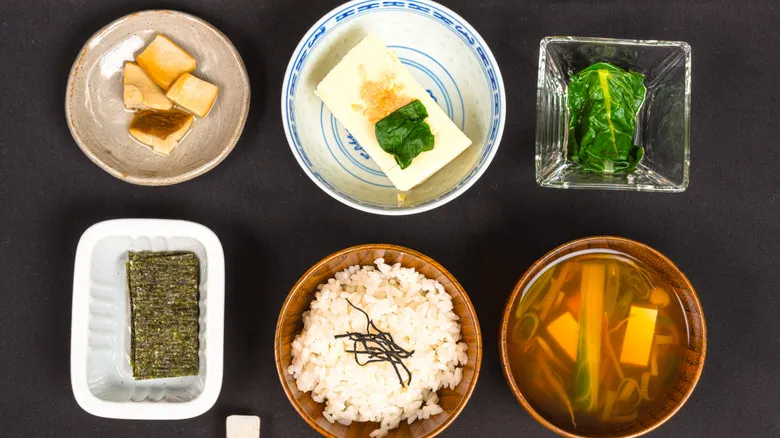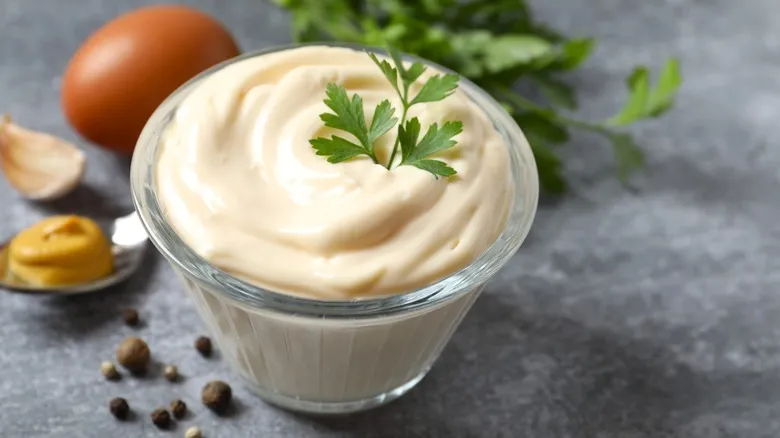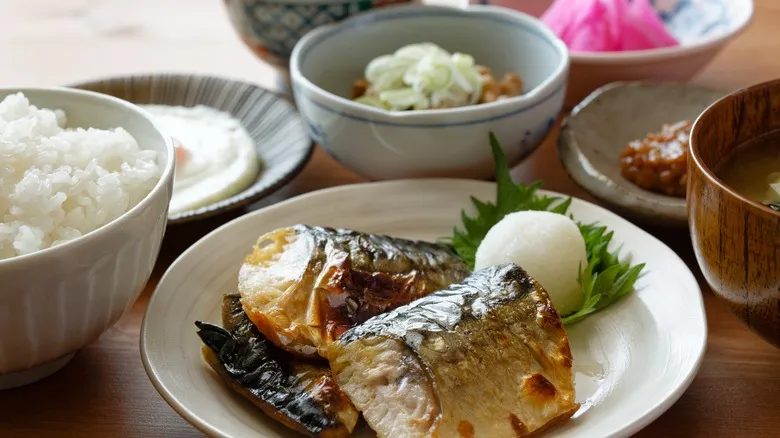Eggs, rice, and veggies (oh, my!)

While eggs can be a component of a traditional Japanese breakfast, tamagoyaki — a rolled omelet unique to Japan — differs significantly from the omelets typically found in American diners. Instead of being folded over and filled with cheese and vegetables, tamagoyaki is prepared quickly in a very thin layer at the bottom of a pan. It is seasoned with rice wine, soy sauce, and sugar, then rolled into a long cylinder and sliced into bite-sized pieces.
In addition to the variety of proteins, no Japanese breakfast is complete without rice. While many people opt for a rice cooker, it is also quite simple and quick to prepare fluffy steamed rice on the stovetop. Both brown and white rice are commonly served plain, allowing diners to mix small portions of rice with other dishes to create a unique flavor experience with each bite.
Japanese breakfasts also include a range of vegetable dishes. Pickled daikon radish and carrots are frequently offered, along with a category of side dishes known as "kobachi," which features various steamed vegetables and small salads that enhance the meal's flavors and nutritional value. These side dishes may include broccoli, bell peppers, onions, mushrooms, and more.
How to eat a Japanese breakfast and what to drink with it

The presentation of a traditional Japanese breakfast holds significant importance. Typically, dishes are arranged family-style, with each food item served in its own separate dish. This arrangement allows diners to easily see the variety of options available, enabling them to tailor their meal to their individual tastes and hunger levels.
Certain items, like soup or salad, may be pre-portioned for convenience. However, once your plate is filled, it's customary to mix bites from different dishes to explore various flavors. For example, you might add a piece of salmon or tamagoyaki on top of your rice, or pair natto with pickled daikon. This approach ensures that each bite offers a unique experience, enhancing the overall enjoyment of the meal.
Although Japan has a deep-rooted appreciation for coffee, it is uncommon to find this popular drink at breakfast. Instead, a steaming cup of green tea is typically enjoyed to refresh the palate between savory dishes. Whether you opt for loose leaf or tea bags, it's worth noting that matcha is rarely consumed during breakfast; non-powdered sencha green tea is generally considered more suitable for the morning. Some individuals may even choose to skip beverages altogether, viewing the liquid from miso soup as sufficient.
Recommended

The Original Fast Food Restaurant Isn't The One You'd Expect

What Flavor Is The White Airhead Exactly?

Mayonnaise Is The Unexpected Ingredient That Sets Southern Banana Sandwiches Apart From All The Rest

17 Iconic Favorite Foods Of Frank Sinatra
Next up

